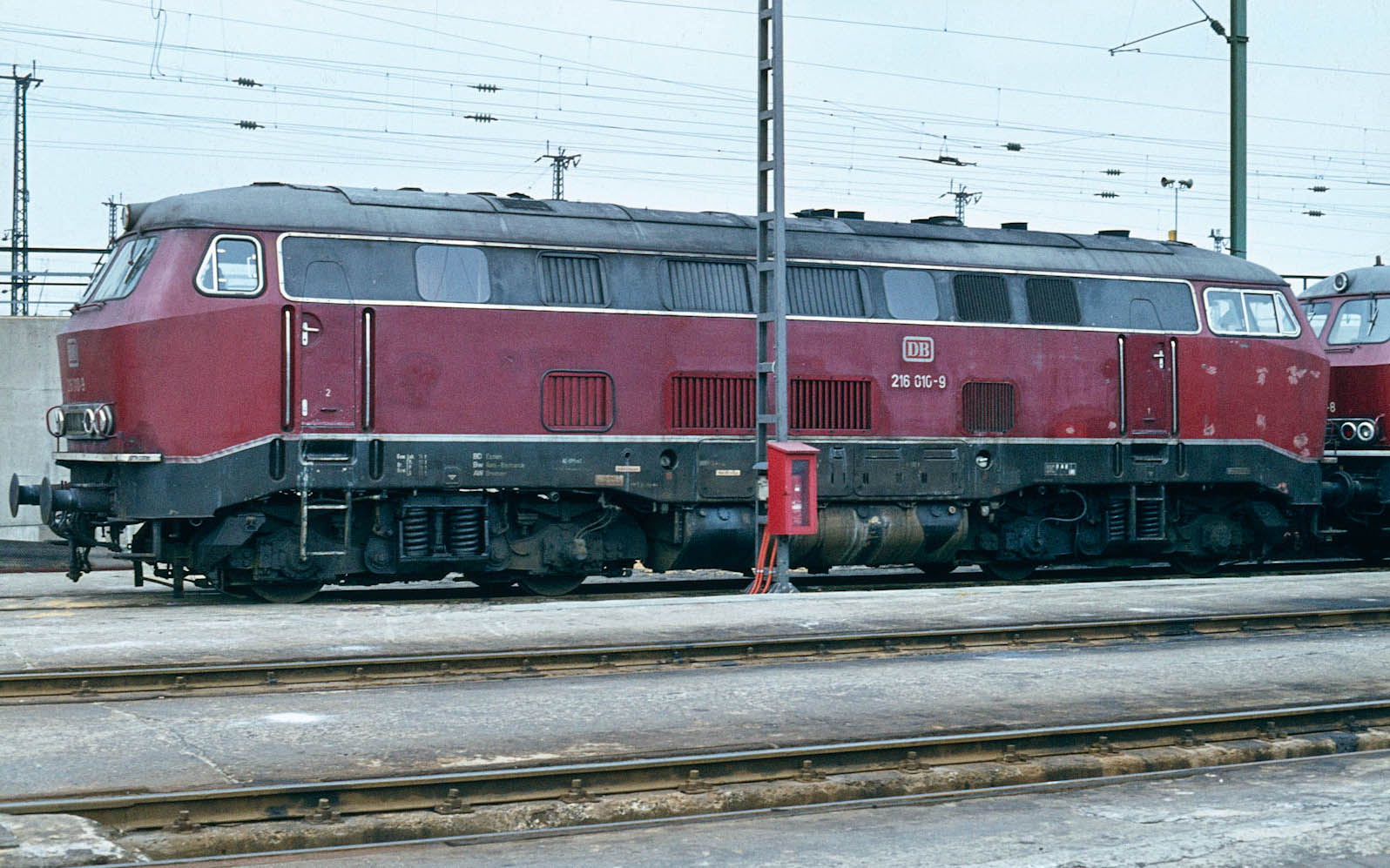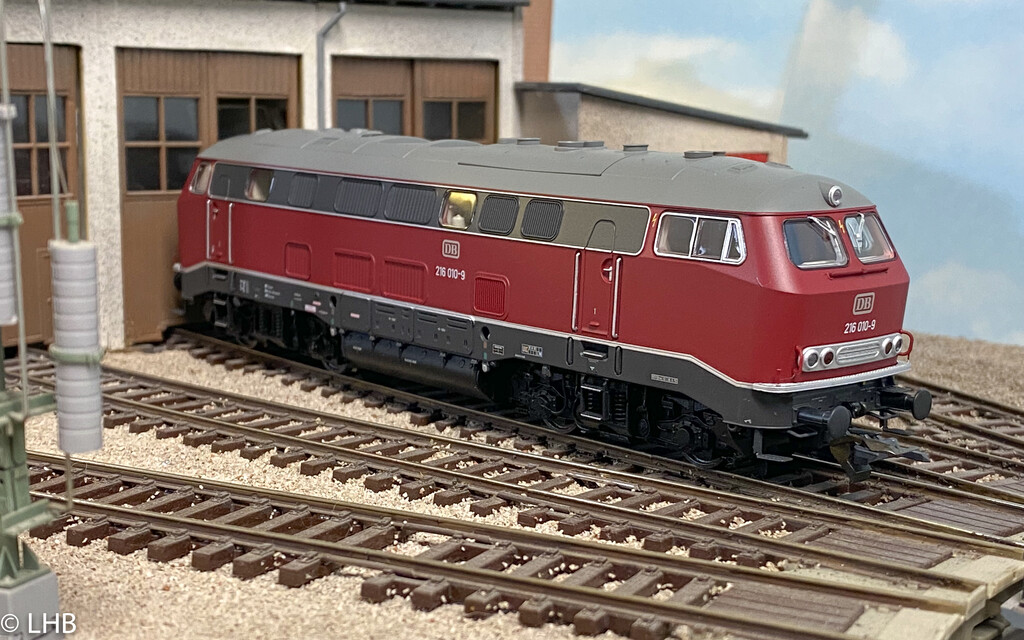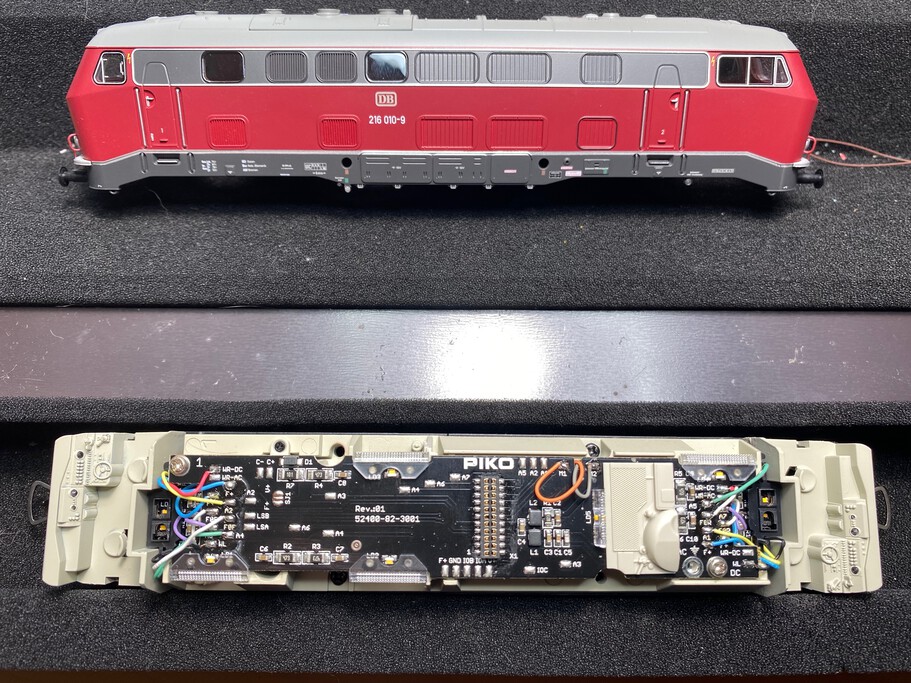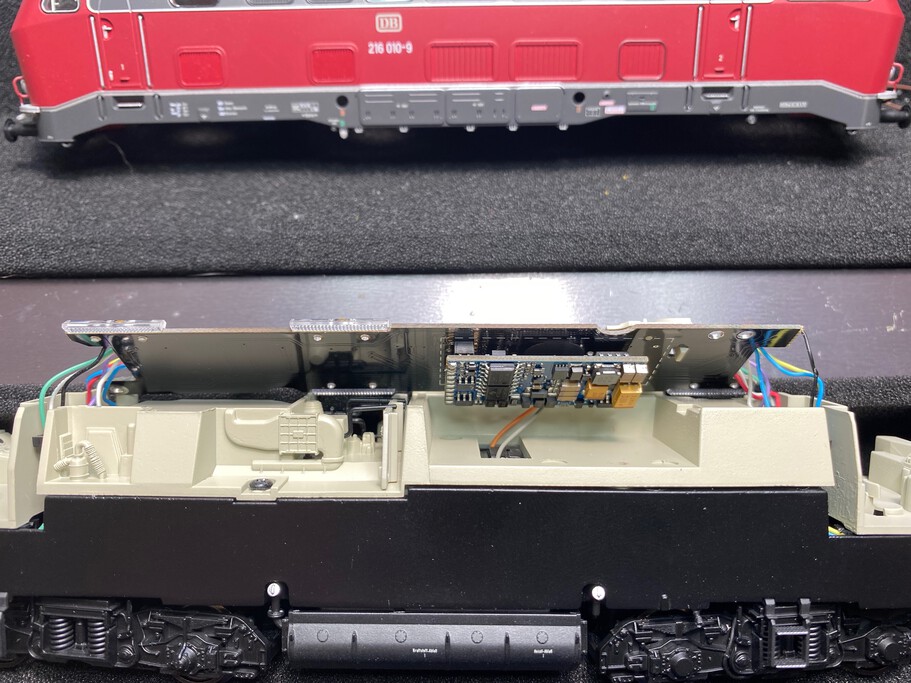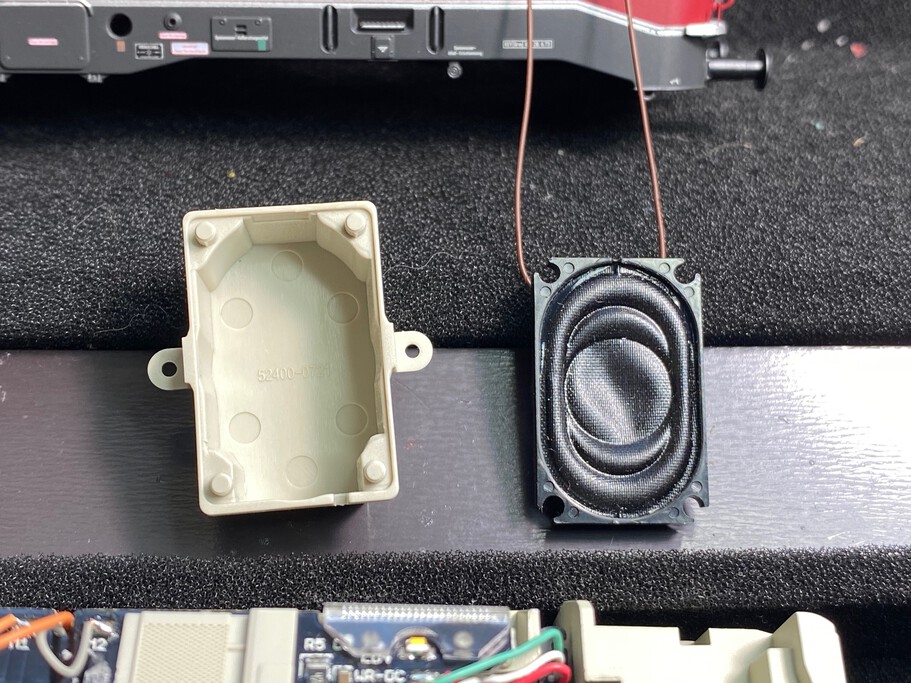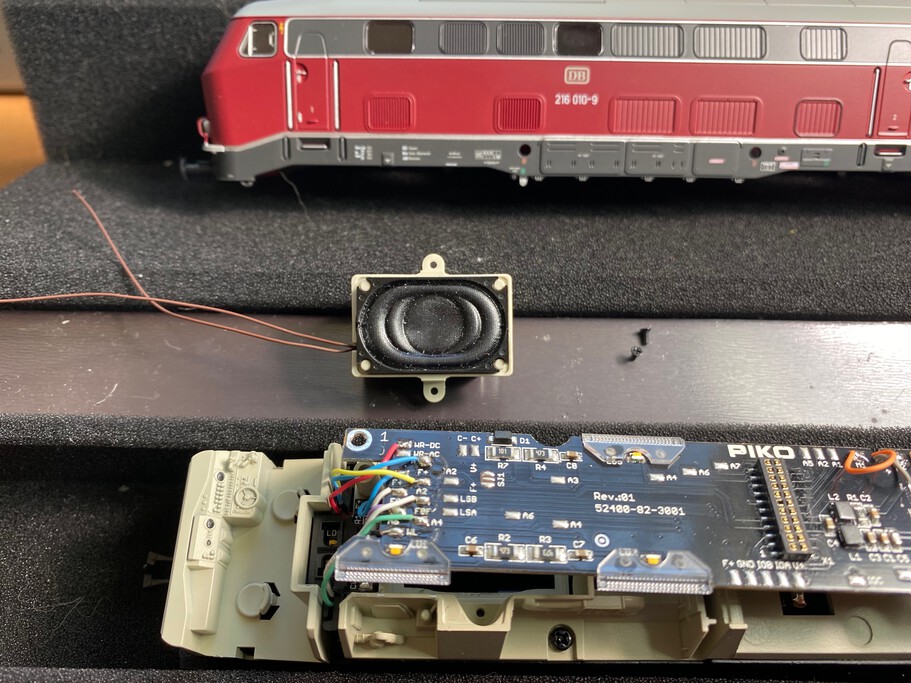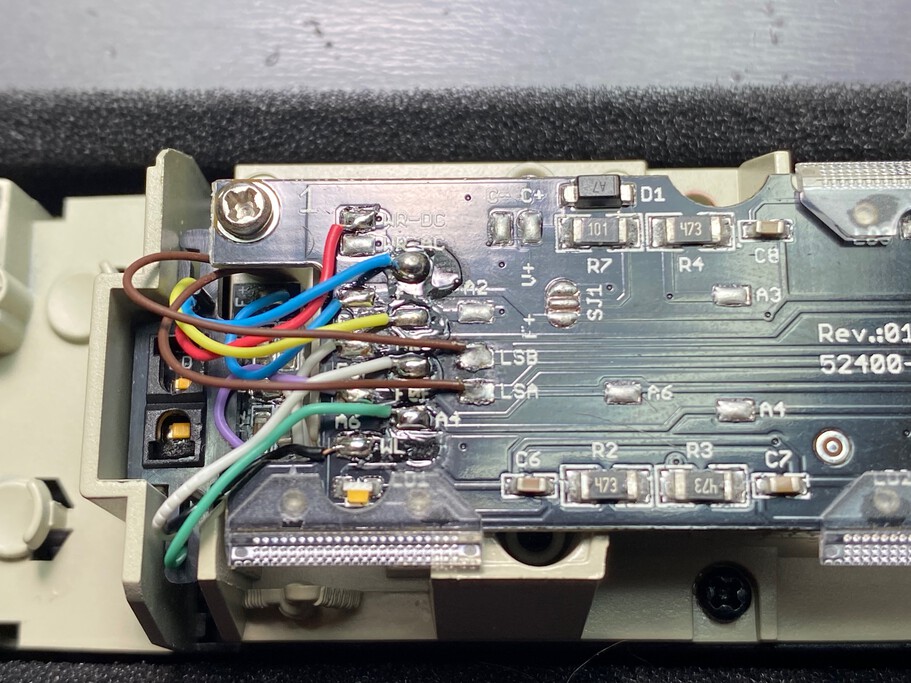Introduction to the 216 010-9
The final (10th) unit of the 10 unit prototype serie V160 has a different styling than the other 9 units. The 10th unit has a more angled front end that became the standard for the rest of the large V160 family. It was built by Henschel in 1963 as the V160 010. It was renumbered to 216 010-9 with the introduction of the new numbering system by the end of the 1960's. It was in service until May 1979 when it was damaged in an accident and it was scrapped.
In 2020 Piko introduced a model of this rather unique locomotive.
DCC Sound Installation
I bought the basic model (catno: 52400) of the Piko 216. Piko has a version with their own sound decoder but as I prefer ESU decoders I decided to do an install of an ESU Loksound 5 decoder. ESU has a specific sound file specically for this model (project no: 94473).
This picture shows the PCB after the shell is removed.
To install an decoder you have to lift the PCB (by removing two screws). This picture shows the Loksound 5 decoder installed in the PLUX socket in the PCB. On the left is a special location for the speaker.
The speaker is placed in the speaker box, the brown wires are connected to the speaker and will have to be connected to the PCB.
After placing the speaker box back in the frame, you can put the PCB back in its location. There are two solder locations, marked LSA and LSB, and the brown wires are connected.
A quick sound demo.
